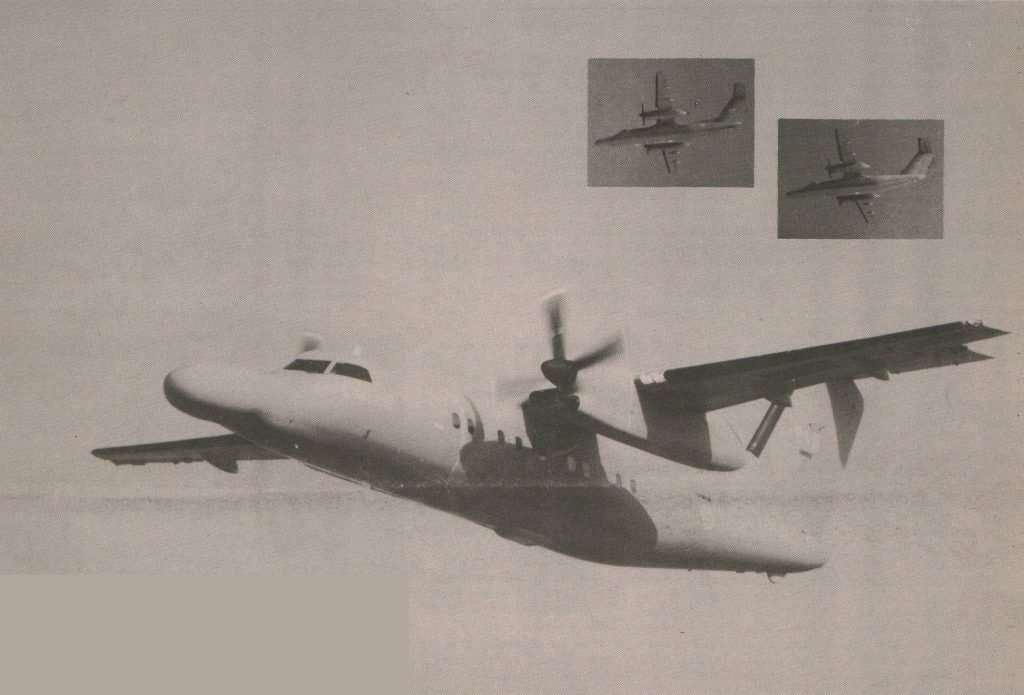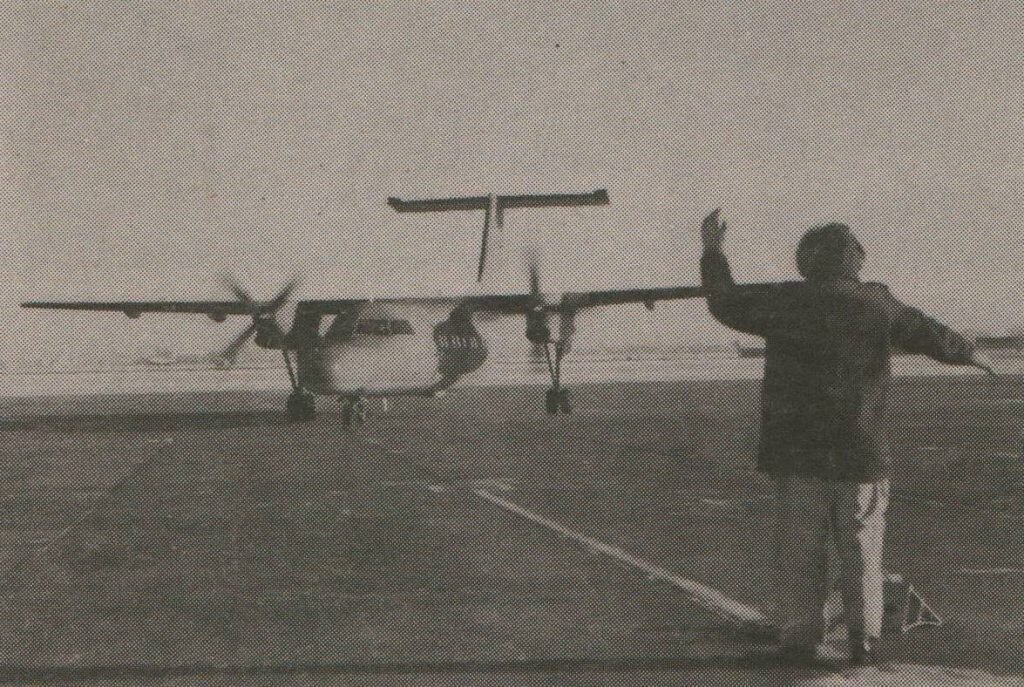CT-142 Has Arrived
(Republished from the 24 January 1990 issue of The Voxair)
By D.F. Collette, Lt 402 SQN

On 20 December, 1989, the Commandant of CFANS, LCol Watt, and the CO of 402 Squadron, LCol Patrick, landed in the first of two CT-142s to arrive at CFB Winnipeg. The Commander of Air Command, LGen F.R. Sutherland, and Mr Lyle Bryson, representing Boeing Canada, were present to welcome the aircraft.
The CT-142 (DASH8) aircraft is a twin-engine, pressurized, turbo-prop, medium range transport aircraft designed and manufactured by Boeing Canada Ltd – deHavilland Division at Downsview, Ontario. The CT-142 will be employed as a navigation trainer, and is equipped with six navigation training stations in the rear cabin. The aircraft has a top cruising speed of 242 knots, can operate up to 25000 feet, and hasa range of 1200 miles with full IFR fuel reserves. The crew will consist of 4 navigation students, 2 navigation instructors, and 2 pilots. Pilot and navigation instructor training will begin in the middle of January and the first navigation course should be flying in
the CT-142 in early 1991.
Soon the CT-142’s ghost grey silhouette will be a familiar sight over Winnipeg, easily identified by the huge radome which has earned the CT-142 the callsign “Gonzo”. Some would think the nose homely, but those involved in fixing and flying Gonzo prefer to think of it as merely “distinctive”. All personnel, from CFANS and 402, technicians and aircrew, are proud to. welcome the newest aircraft in the inventory of the Canadian Air Force.
A new era for CFANS

December 1989 witnessed the arrival of the first two CT 142 Navigation Training Aircraft to CFB Winnipeg. Their recent arrival signaled the beginning of a new era of Navigator training for the Canadian Forces Air Navigation School and plans are now underway for the eventual implementation of the CT 142 Navigation Training System.
The major subsystem of the CT 142 Navigation Training System is the ATS or Airborne Navigation Training system which is installed in the CT 142 aircraft.
The CT 142 interior has been specially modified from the standard civilian DASH 8 aircraft interior to provide for navigation training. There are six console workstations, four of which are student positions and two of which are instructor positions. In addition to the console workstations, two sextant positions are provided where students will be required to perform celestial observations for position fixing. Overall system control is exercised by the two instructors. The consoles in the aircraft cabin are arranged with the instructor’s consoles located between two student consoles thus allowing the instructors visual access to the student workstations. The instructors are responsible for assigning control of navigation instruments to students, denying students access to specific navigation instruments, assessing student performance, and completing other supervisory tasks. Each console position, in addition to indicators for navigation information and communications control panels and facilities, are provided with a Radar Display and a Plasma Panel display with a touch panel overlay. The Control Display Units for all navigation instruments are displayed on the Plasma Panel. The design of these Control Display Units for all navigation instruments emulates real-life equipment as closely as possible. Touch keys are made to imitate rotary or press switches and Alpha Numeric readouts that operate in the same manner as their actual counterparts have been provided.
A tabulation of navigation information is displayed on the Radar Display in an area dedicated to this purpose and is referred to as a DID or Digital Information Display. The Radar Display also provides Radio-Teletype or RATT message texts and several formats for instructor use in entering exercise data. The Radar Display includes cursors which are driven by a trackball mounted on the console.
The specialized consoles and equipment of the CT 142 will afford future students with training on state-of-the-art systems and should provide CFANS with a superior navigation training platform until well into the next century.
